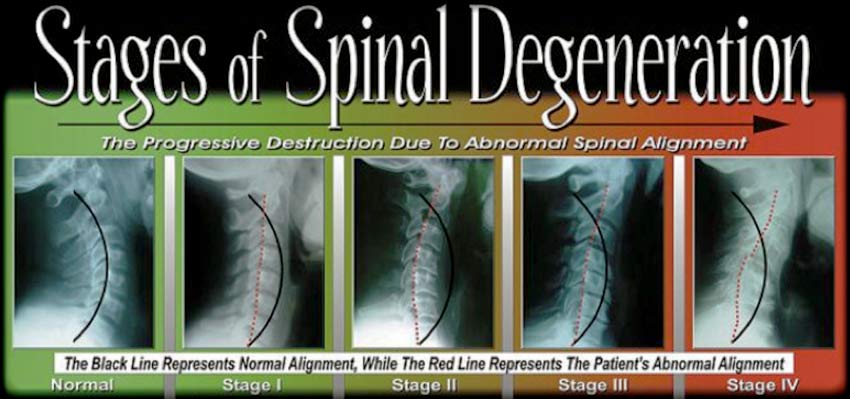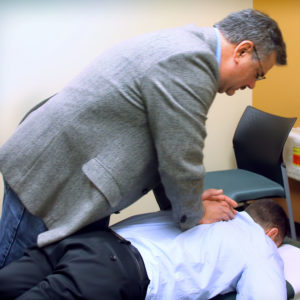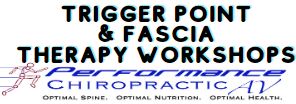In nature there are neither rewards nor punishments; There are only consequences!
–Robert B. Ingersoll
Your spinal bones begin to change shape; your discs swell, then shrink; your ligaments, tendons and muscles begin to tighten and weaken; and your entire structural system—spinal column, hips, shoulder girdle—loses its balance, flexibility, stability and strength. What is happening? Your spine and structural system are degenerating.
In addition to bone degeneration, your nerves, body chemistry and internal organs can also be affected. In time you are less able to adapt to the pressures of life; you lose the spring in your step and your youthful energy; you lose height and appear to shrink.
LOSS OF HEIGHT
Most people believe they lose height when they get “old.” Does that mean that at age 65 you wake up and find yourself shorter? Of course not. The loss of height is silent, slow and gradual, and may begin in your 20’s and 30’s! It is one of the signs of spine and disc degeneration.
WHAT CAUSES SPINAL DEGENERATION?
Spinal degeneration is usually caused by years of long-standing subluxations in your spine and structural system. What are subluxations?
SUBLUXATIONS
Stress may cause your spinal bones or vertebrae to shift from their proper places. Your vertebrae misalign and irritate the surrounding nerves, bones, discs, ligaments and other soft tissue causing them to age and deteriorate. This may cause a lot of pain but in some people may be painless. Subluxations also result in fixations or loss of mobility of a joint. This has been shown to be a major factor in degeneration.1 In addition, trauma (accidents, injuries) can result in degeneration of a joint.2
SPINAL DECAY
In many people spinal degeneration is like tooth decay in that it is often a painless process. By the time a person notices any problem or feels any pain the degeneration has been going on for many years!
THE PHASES OF DEGENERATION
 Your spine degenerates in stages or phases:3
Your spine degenerates in stages or phases:3
- Degeneration Phase 1 (4)
This phase is often seen up to age 20. Your spine loses its normal balance and its normal curves. Your nerves may be affected and the vital life energy that flows over them is affected. In addition your joints, discs, nerves and posture are stressed and age more quickly. Surprisingly, there may be no pain other than occasional minor discomfort. A slight lessening of energy and slight height loss may occur. Response to spinal care is generally good.5
- Degeneration Phase 2 (6-7)
Often seen in those ages 20 to 40. In this phase, there is evidence of spinal decay, disc narrowing and bone spurs (deformations); postural changes are much worse. This condition is very common—by age 40, 80% of males and 76% of females exhibit moderate disc degeneration.8 Spinal canal narrowing or stenosis may occur. This phase is characterized by more common aches and pains, fatigue and a diminished ability to cope with stress. Height continues to decrease. With chiropractic care, significant improvement is possible.
- Degeneration Phase 3
Often seen in people ages 40 to 65.9 Here there are more postural imbalances, increased nerve damage, permanent spinal scar tissue and advanced bone deformation. Physical and/or mental weakness or disability begin. Loss of height and loss of energy continue. With chiropractic care, much reversal is possible.
- Degeneration Phase 4
Often seen in those ages 65 and older. Now postural imbalance is severe and motion is limited. There is severe nerve damage and scar tissue and bones may begin to fuse. In this phase we find pain, various degrees of physical or mental disability and continued loss of energy and height. Chiropractic may still help in this phase, giving new life to old bones, offering symptomatic relief and some limited correction as well.10
THE CHIROPRACTIC APPROACH 
It is better to wear out than to rust out. —Richard Cumberland
Must you passively allow your spine to degenerate? No! Chiropractic can reduce, halt and even reverse spinal degeneration by improving spinal balance and posture and keeping your joints, nerves and discs healthy and strong throughout your lifetime.11-12
As one researcher writes:
The restoration of motion to a previously [fixated] joint leads to a restoration of normal joint function and physiology.13
Further, there is increasing evidence that some spinal degeneration may be reversible.14 As another researcher has noted:
Correction of a vertebral subluxation can not only attenuate and arrest this degenerative process, but can actually allow the condition to reverse itself.15
 PREVENTION
PREVENTION
The earlier the degeneration process is identified … the better chance the patient has for its arrest and reversal.16
Of course, the best approach to spinal degeneration is to prevent it from occurring in the first place!
This means bringing your children in for periodic checkups to keep them free of subluxations. Of course, anytime someone experiences a fall, accident or other extreme stress they should have their body checked by a chiropractor to make sure that they are subluxation-free.
Stress, including emotional stress, job stress, school stress, family stress and environmental stress, takes its toll on us. For that reason you should have yourself checked periodically for subluxations that slowly and steadily drain your life of energy, strength and wholeness. See your chiropractor regularly to keep yourself free from subluxations and free from degeneration.
Call us to schedule your appointment today! (661) 942-5000.
References
- Cramer GD, Fournier JT, Wolcott CC, Henderson CNR. Degenerative changes following spinal fixation in a small animal model. JMPT. 2004;27(3):141-154.
2. Gelber AC, Hochberg MC, Mead LA et al. Joint injury in young adults and risk for subsequent knee and hip osteoarthritis. Annals of Internal Medicine. 2000;133(5):321-328.
3. Axelsson P, Karlsson B, Intervertebral mobility in the progressive degenerative process. A radiostereometric analysis. European Spine Journal. 2004;13(6):567-572.
4. Gottlieb M. Neglected spinal cord, brain stem and musculoskeletal injuries stemming from birth trauma. JMPT. 1993;16(8):537-543.
5. Gunn CC. ‘Prespondlyosis’ and some pain syndromes following denervation supersensitivity. Spine. 1980;5(2).
6. Miller J, Schmatz B & Schultz A. Lumbar disc degeneration: correlation with age, sex and spine level in 600 autopsy specimens. Spine. 1988;13:173.
7. Ressel O, Rudy R. Biovertebral subluxation correlated with somatic, visceral and immune complaints: an analysis of 650 children under chiropractic care. JVSR. October 18 2004;1-23.
8. Sato A. The reflex effects of spinal somatic nerve stimulation on visceral function. JMPT. 1992;15(1):57-61.
9. Tachihara H et al. Does facet joint inflammation induce radiculopathy? An investigation using a rat model of lumbar facet joint inflammation.
Spine. 2007;32(4):406-412.
10. Flesia J. Renaissance: A psychoepistemological basis for the new renaissance intellectual. Colorado Springs, CO: Renaissance International, 1982.
11. Dishman RW. Review of the literature supporting a scientific basis for the chiropractic subluxation complex. JMPT. 1985;8:163-174.
12. Brantingham J, Snyder WR, Biedebach D. Spinal manipulation may help reduce spinal degenerative joint disease and disability. Dynamic Chiropractic. April 22, 1994.
13. Lantz CA. The vertebral subluxation complex. International Review of Chiropractic. September/October 1989;39.
14. Bland JH. The reversibility of osteoarthritis. Am J Med. 1983;75:16-26.
15. Ressel OJ. Disc regeneration: reversibility is possible in spinal osteoarthritis. ICA Review. 1989;45(2):39-61.
16. Ibid.





FOLLOW US!